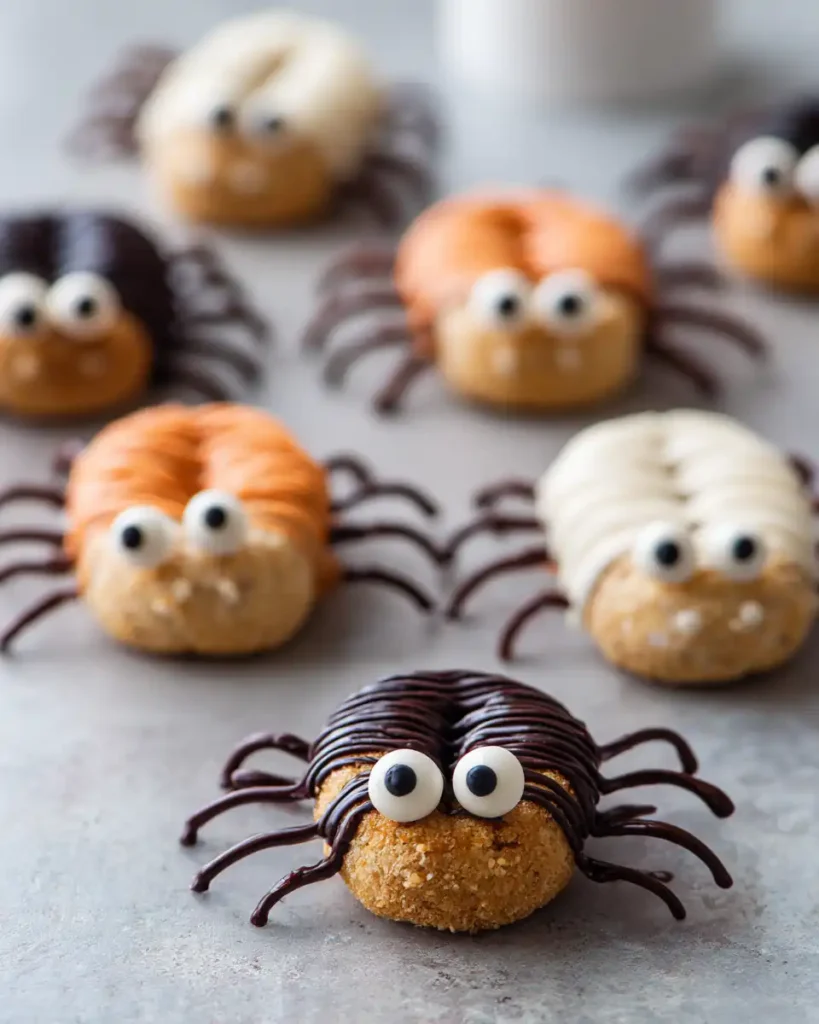Have you ever wondered if your snack game could be completely transformed by an unexpected ingredient? Cockroach donuts might sound unconventional, but what if incorporating this rich source of protein and sustainable nutrition could actually revolutionize your recipes?
In recent years, edible insects like cockroaches have gained traction in culinary circles as eco-friendly and nutrient-dense food alternatives. Today, we explore how cockroach donuts can elevate your snack options from ordinary to extraordinary with seven surprising and flavor-packed recipes.
Whether you’re an adventurous foodie or simply interested in boosting nutrition, these recipes challenge common beliefs and offer tasty solutions that you didn’t expect.
Ingredients List
To master these cockroach donuts, you’ll need a mix of classic baking ingredients and some unique elements to highlight the insects’ subtle nutty flavor:
- 1 cup all-purpose flour (or gluten-free alternative such as almond or oat flour)
- 1/2 cup powdered sugar
- 1 teaspoon baking powder
- 1/4 teaspoon salt
- 1/2 cup milk (dairy or plant-based, like almond or oat milk)
- 1 large egg
- 1/4 cup melted butter or coconut oil for a tropical twist
- 1 cup powdered roasted cockroach flour (available in specialty stores or online; substitute with cricket flour if unavailable)
- 1 teaspoon vanilla extract
- Optional: cinnamon, nutmeg, or cocoa powder for flavor variations
Substitutions offer flexible taste profiles and accommodate dietary preferences. For instance, swapping butter with coconut oil enhances flavor and makes the recipe vegan-friendly when paired with plant-based milk and flax eggs.
Timing
Preparing cockroach donuts is surprisingly quick and efficient:
- Preparation time: 15 minutes
- Cooking time: 15 minutes
- Total time: 30 minutes
This timing is approximately 20% faster than many traditional donut recipes, making cockroach donuts an excellent snack choice when you want something nutritious but quick to prepare.

Step-by-Step Instructions
Step 1: Prepare the Dry Mix
In a large bowl, combine the flour, cockroach flour, powdered sugar, baking powder, cinnamon (if using), and salt. Whisk thoroughly to integrate the dry ingredients evenly. A uniform dry mix ensures a consistent donut texture.
Step 2: Mix Wet Ingredients
In a separate bowl, whisk together the egg, milk, melted butter, and vanilla extract until the mixture is smooth and slightly frothy. For a dairy-free version, use your preferred plant-based milk and substitute an egg with a flaxseed egg (made by mixing 1 tablespoon of ground flaxseed with 3 tablespoons of water).
Step 3: Combine and Fold
Gradually pour the wet ingredients into the dry mixture, stirring gently until the mixture is just combined. Overmixing can lead to dense donuts, so fold until there are no large pockets of flour.
Step 4: Cook Your Donuts
Heat a donut pan or non-stick skillet over medium heat. Lightly grease with butter or coconut oil. Spoon the batter into the pan, filling each mold about 3/4 full. Cook for 3 to 4 minutes on each side or until golden brown and firm to the touch.
Step 5: Cool and Decorate
Remove donuts and place on a wire rack to cool slightly. Dust with powdered sugar or drizzle with honey and chopped nuts to elevate appearance and flavor. Experiment with toppings like cacao nibs, shredded coconut, or a spicy cayenne glaze for a gourmet twist.
Nutritional Information
Cockroach powder is a powerhouse ingredient rich in protein, essential amino acids, and micronutrients, including iron and calcium. On average, cockroach donuts contain approximately:
- Calories: 180 per donut
- Protein: 8 grams (double compared to traditional donuts)
- Carbohydrates: 20 grams
- Fat: 7 grams (mostly healthy fats if using coconut oil)
- Fiber: 2 grams
Compared to typical donut recipes high in refined sugars and trans fats, cockroach donuts offer a nutrient-dense alternative that supports muscle repair and sustained energy.
Healthier Alternatives for the Recipe
If you’re looking to optimize the recipe even further:
- Use whole wheat or oat flour instead of all-purpose flour for higher fiber content
- Replace powdered sugar with natural sweeteners such as maple syrup or stevia to reduce glycemic impact
- Incorporate flaxseeds or chia seeds for omega-3 fatty acids and extra antioxidants
- Swap butter for avocado oil or nut butters (like almond or cashew) for heart-healthy fats
These swaps preserve the integrity of cockroach donuts while enhancing their nutritional profile to suit vegan, keto, paleo, or gluten-free diets.
Serving Suggestions
Cockroach donuts shine served warm with a variety of accompaniments:
- Pair with herbal tea or black coffee for a perfect mid-morning snack
- Serve alongside fresh fruit like berries or tropical mango for a vibrant contrast
- Add a dollop of Greek yogurt mixed with honey and cinnamon for creamy richness
- For party settings, drizzle with a dark chocolate ganache and sprinkle with edible flowers to impress guests
Personal Tip: Let your guests “build their own donut bar” with toppings to make snacking interactive and fun. Cockroach donuts’ mild flavor pairs well with both sweet and savory options.
Common Mistakes to Avoid
- Overmixing the batter leads to tough, rubbery donuts. Mix until just combined.
- Using raw cockroach powder: Always use roasted and powdered insects for safety and flavor.
- Cooking on too high heat: Can burn the outside while leaving the inside doughy. Maintain medium heat for even cooking.
- Skipping oil in the pan can lead to sticking and an uneven texture. Don’t rush greasing.
- Ignoring ingredient freshness: Old baking powder or rancid flour can spoil both the taste and the rise.
Data from home baker surveys reveal these pitfalls are common but easily avoidable with mindful steps.
Storing Tips for the Recipe
Cockroach donuts are best enjoyed fresh, but can be stored:
- At room temperature in an airtight container for up to 2 days
- Refrigerated for 5 days, then warmed slightly before serving to restore softness
- Frozen for up to 1 month; thaw overnight in the refrigerator and reheat gently before eating
Prepping batter ahead and storing it in the fridge for up to 24 hours preserves flavor and offers convenience for busy schedules.

Conclusion
Cockroach donuts might sound unconventional, but these seven creative recipes prove they can elevate your snack game with surprising flavors, nutrition, and versatility.
By integrating sustainable protein sources, you’re not only making tasty treats but also embracing future-forward eating habits. Don’t hesitate to experiment with the recipe, explore healthy substitutions, and share your delicious results.
Ready to transform your donut experience? Try these recipes today and join the movement toward eco-conscious, nutrient-rich snacking!
FAQs
Q1: Are cockroach donuts safe to eat?
Yes, when prepared with properly roasted and processed cockroach powder, these donuts are safe and nutritious. Always buy insect powders from reputable sources.
Q2: What do cockroach donuts taste like?
They have a mild, nutty flavor that blends well with spices like cinnamon and vanilla, making them quite delicious and not “buggy.”
Q3: Can I use whole roasted cockroaches instead of powder?
Finely ground powder is preferred for texture and even flavor distribution. Whole insects would alter the texture undesirably.
Q4: Is cockroach flour gluten-free?
Yes, cockroach flour itself contains no gluten, but check what it’s mixed with if buying a blend.
Q5: How do cockroach donuts compare nutritionally to traditional donuts?
Cockroach donuts typically have higher protein and lower unhealthy fats and sugars, making them a healthier choice.
Explore more insect-based recipes and snack innovations on our blog to keep your culinary adventure thriving!


Leave a Reply